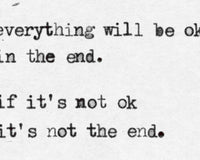When I was stationed in Germany I heard the word Über for the first time. It denotes an outstanding or supreme person or thing, kind of like tremendous! Like so many of you, I have used the Uber Technologies ride-sharing app many times. The company has grown to meteoric heights (valued at $70B) since its inception in 2009 so imagine my surprise when I saw the front-page news on Tuesday stating that the CEO, Travis Kalanick, was taking a leave of absence due to a scathing report on the company’s dysfunctional behavior.
 I’ve seen my share of “oh how the mighty have fallen” and been inside a few organizations when it happened. I had the honor of being interviewed on two nationally syndicated shows this past week to discuss this type of event from a leadership and ethics perspective. What happened at Uber isn’t just a “tech” company issue. It’s not about the industry; it’s about the individuals. Any company can fail when faced with insufficient leadership organizational culture dysfunction. I’ve worked in the military, semi-conductor, defense contracting, and publishing and there is always the risk of an organization falling, stalling or folding. The real issue is, how deeply rooted is the dysfunction and the character malformations? Can you make a rotten apple ripe again? Can you reestablish trust be rebuilding or do you have to start over?
I’ve seen my share of “oh how the mighty have fallen” and been inside a few organizations when it happened. I had the honor of being interviewed on two nationally syndicated shows this past week to discuss this type of event from a leadership and ethics perspective. What happened at Uber isn’t just a “tech” company issue. It’s not about the industry; it’s about the individuals. Any company can fail when faced with insufficient leadership organizational culture dysfunction. I’ve worked in the military, semi-conductor, defense contracting, and publishing and there is always the risk of an organization falling, stalling or folding. The real issue is, how deeply rooted is the dysfunction and the character malformations? Can you make a rotten apple ripe again? Can you reestablish trust be rebuilding or do you have to start over?
 Any “leader” who thinks they are too big to fail should not be at the helm. Statements such as this show a lack of humility, teachability, and realism; especially when issues have arisen due to leadership failures up and down the ranks. A company’s success and reputation rises and sets on its Board of Directors. The Board isn’t just advisors, they have a fiduciary and a global responsibility to do not only the best thing for the company and the shareholders, but the right thing from a global and human capital perspective. Although CEOs have their hands in day to day operations, it’s Boards who have their arms around the entire organization. I’ve consulted with several entities regarding how to ensure you have the right CEO and exemplary board members at the table. The most important thing for those in positions of leadership or governance to remember is the difference between Peace keeping (placating, moving the problem to another department) and Peacemaking – full disclosure, corrective action, and then restoration and healing.
Any “leader” who thinks they are too big to fail should not be at the helm. Statements such as this show a lack of humility, teachability, and realism; especially when issues have arisen due to leadership failures up and down the ranks. A company’s success and reputation rises and sets on its Board of Directors. The Board isn’t just advisors, they have a fiduciary and a global responsibility to do not only the best thing for the company and the shareholders, but the right thing from a global and human capital perspective. Although CEOs have their hands in day to day operations, it’s Boards who have their arms around the entire organization. I’ve consulted with several entities regarding how to ensure you have the right CEO and exemplary board members at the table. The most important thing for those in positions of leadership or governance to remember is the difference between Peace keeping (placating, moving the problem to another department) and Peacemaking – full disclosure, corrective action, and then restoration and healing.
When a company hits a crisis such as this, there are huge challenges to filling a leadership void with the right people. That is the quintessential issue at the heart of any entity, professional or personal. There’s a great book titled A Contrarians Guide to Leadership by Steven Sample, former President of USC. His point is to be aware of the tendency that A players hire A-, A- hire C’s and C’s hire F’s. So, you really have to monitor this. And I’m not talking merely about the brightest minds; we also must attract, select, train and retain the brightest hearts. Watch out for this insidious slide of talent hires. Make sure you have individuals that aren’t threatened by others who want to raise the bar on performance or adhere to standards.
One question asked during my interviews last week was, is this a problem of millennials managing millennials? Anytime you have someone supervising direct reports who has not been mentored or groomed in the art and science of leadership you are gambling with the integrity of your organization. If they have not learned followership, which I talk about in my book, A Message to Millennials, they have not had the chance to develop and mature in terms of character, empathy, conscientiousness and ethics. Hence, it’s not generational. Without foundational training and effective checks and balances, you are bound to have issues no matter what the generation.
 What happened at Uber is actually the norm for any organization that goes through explosive growth. The problem is they didn’t root out the bad habits which then became the normalized culture of the company. Read the Parable of the Mustard Seed in the Gospels. It talks about the smallest seed and how it rapidly becomes the biggest tree. When you experience growth, especially explosive growth, you attract a great deal of positive talents and a great deal of undesirable behaviors. There’s an old adage: new levels, new devils. Corporate structures breed and hide many types of dysfunctional behaviors. That’s why it’s critical you make sure the lines of accountability are clear, strong and binding to everyone within the organization. Noel Coward has one of my favorite quotes: “The higher the building, the lower the morals.” Before you think that bigger is automatically better or automatically attracts a better caliber and character of leaders, think again.
What happened at Uber is actually the norm for any organization that goes through explosive growth. The problem is they didn’t root out the bad habits which then became the normalized culture of the company. Read the Parable of the Mustard Seed in the Gospels. It talks about the smallest seed and how it rapidly becomes the biggest tree. When you experience growth, especially explosive growth, you attract a great deal of positive talents and a great deal of undesirable behaviors. There’s an old adage: new levels, new devils. Corporate structures breed and hide many types of dysfunctional behaviors. That’s why it’s critical you make sure the lines of accountability are clear, strong and binding to everyone within the organization. Noel Coward has one of my favorite quotes: “The higher the building, the lower the morals.” Before you think that bigger is automatically better or automatically attracts a better caliber and character of leaders, think again.
 I highlighted the role of the board and CEO in setting and enforcing the culture, but this responsibility also falls squarely on middle management. The CEO can’t be everywhere. They are working on the business, not in the business. They need to implicitly trust that the individuals they leave the tactical day-to-day operations to have their backs and will do the right thing. In military speak, this is your rear echelon. And you can lose the battle if they don’t have it together. You have to trust them and they have to trust you since you’re in it together. If you don’t have this consensus, you’re going to have sabotage no matter how brilliant or lucrative the vision. One piece of my doctoral research is taking basic Ethical Decision-making models to a better place. It’s called sensemaking, and it’s a great tool especially in today’s world of flattened hierarchies, transparent operations, diverse employees and globalization.
I highlighted the role of the board and CEO in setting and enforcing the culture, but this responsibility also falls squarely on middle management. The CEO can’t be everywhere. They are working on the business, not in the business. They need to implicitly trust that the individuals they leave the tactical day-to-day operations to have their backs and will do the right thing. In military speak, this is your rear echelon. And you can lose the battle if they don’t have it together. You have to trust them and they have to trust you since you’re in it together. If you don’t have this consensus, you’re going to have sabotage no matter how brilliant or lucrative the vision. One piece of my doctoral research is taking basic Ethical Decision-making models to a better place. It’s called sensemaking, and it’s a great tool especially in today’s world of flattened hierarchies, transparent operations, diverse employees and globalization.
Bottom line: Controlled growth coupled with a high caliber of mature, discerning managers at all levels is essential for any organization. An exemplary board that provides the guard rails and freedom for the CEO to maneuver the business is also a must. And never forget that the love of money drives people to do bad things; and when you want it bad, that’s how you get it.








